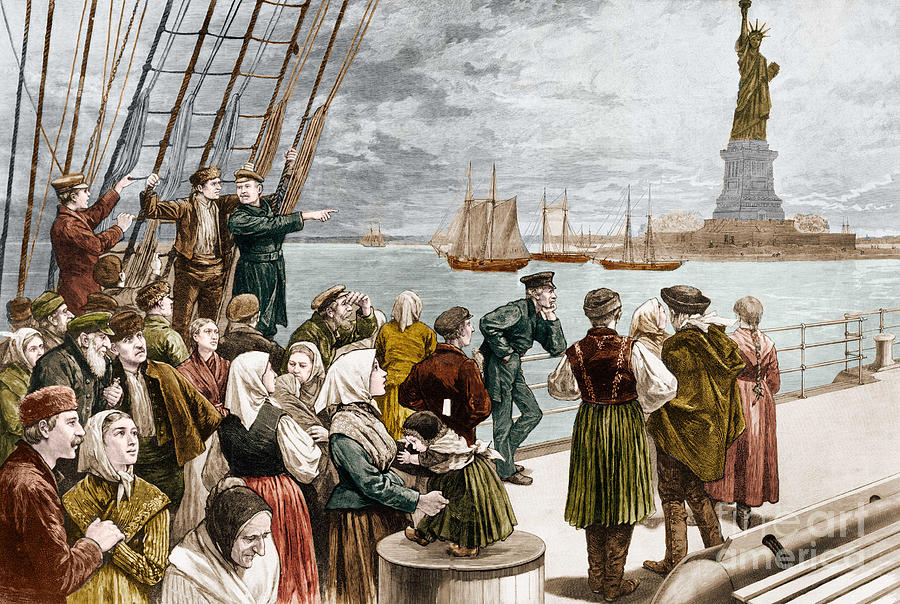Week 17

The Statue of Liberty (Liberty Enlightening the World; French: La Liberté éclairant le monde) is a colossal neoclassical sculpture on Liberty Island in New York Harbor, within New York City. The copper statue, a gift to the U.S. from the people of France, was designed by French sculptor Frédéric Auguste Bartholdi and its metal framework was built by Gustave Eiffel. The statue was dedicated on October 28, 1886.
The statue is a figure of Libertas, the Roman goddess of liberty. She holds a torch above her head with her right hand, and in her left hand carries a tabula ansata inscribed JULY IV MDCCLXXVI (July 4, 1776, in Roman numerals), the date of the U.S. Declaration of Independence. A broken chain and shackle lie at her feet as she walks forward, commemorating the national abolition of slavery following the American Civil War.[8] After its dedication the statue became an icon of freedom and of the United States, being subsequently seen as a symbol of welcome to immigrants arriving by sea.
By the late 1860s the United States was expanding, and its people multiplying, faster than any other country in history. At the beginning of the Civil War, the total population, North and South, free and slave, was 31,443,321. That placed it in the forefront of European countries, all of which (except France) were also expanding fast though entirely by natural increase. At the end of the Civil War decade, the US population was 39,818,449, an increase of more than a quarter. By 1880 it had passed the 50 million mark, by 1890 it was 62,847,714, more than any other European country except Russia and still growing at the rate of 25 percent a decade and more. By 1900 it was over 75 million, and the 100 million mark was passed during World War One.5 US birth-rates were consistently high by world standards, though declining relatively. White birth-rates, measured per 1,000 population per annum, fell from 55 in 1800 to 30.1 in 1900 (black rates, first measured in 1850 at 58.6, fell to 44.4 in 1900). But the infant mortality rate, measured in infant deaths per 1,000 live births, also fell: from 217.4 in 1850 to 120.1 in 1900 and under 100 in 1920 (black rates were about two-fifths higher). And life expectancy rose: from 38.9 years in 1850 to 49.6 in 1900, passing the 60 mark in the 1920s (black rates were about twelve years lower). These combined to produce a very high natural rate of population increase.6 This natural increase was accompanied by mass-immigration. From 1815 to the start of the Civil War, over 5 million people moved from Europe to the United States,
Johnson, Paul. A History of the American People (p. 513). HarperCollins.
